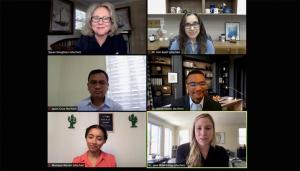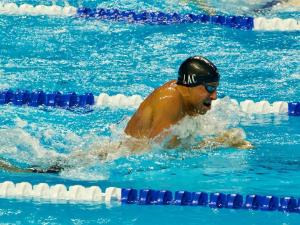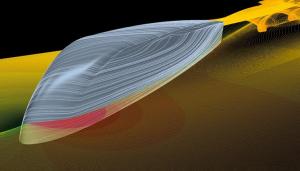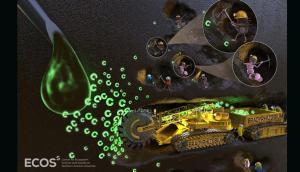LAB REPORT
Science and Technology Making Headlines
July 16, 2021


The "Picture a Scientist" virtual panel discussion was attended by more than 400 employees, community members, students and retirees who signed up to watch the film and the live discussion.
Shedding light on gender bias in science
The Lawrence Livermore Laboratory Women’s Association and Diversity, Equity and Inclusion programs at Lawrence Livermore, in partnership with the Livermore Lab Foundation, hosted a candid and meaningful virtual panel presentation discussing a variety of issues raised in “Picture a Scientist.” The documentary chronicles the bias, harassment and institutional discrimination experienced by women researchers throughout their careers and addresses how they are paving the way for a new generation of women scientists.
Prior to the live panel presentation, LLNL employees, students, community members and retirees were given a special screening of the film to enhance awareness of gender bias and diversity, equity and inclusion in science, technology, engineering and mathematics fields. “Picture a Scientist” is now available to stream via Netflix.
Sharing their insight and perspectives were panelists Kim Budil, LLNL director; Jane Willenbring, associate professor of Geological Sciences at Stanford University (a researcher featured in the film); and the president of Las Positas College, Dryell Foster. They were joined by LLNL employees Jason Cruz, systems engineer and chair of LLNL’s Asian Pacific American Council employee resource group; and Monique Warren, environmental engineer and past chair of the African American Body of Laboratory Employees employee resource group


LLNL technologist Brandon Fischer finished 15th in the 100-and 200-meter breaststroke (seen here) at the U.S. Olympic trials.
A Fisch in water
Lawrence Livermore mechanical technologist Brandon Fischer came up short in his bid to qualify for the Tokyo Olympics, but his accomplishments in and out of the pool make him stand out.
Fischer, 32, came in 15th place in the 100- and 200-meter breaststroke at the U.S. Olympic trials (WAVE II) in Omaha, Nebraska last month; only the top two advanced.
But Fischer’s story is more about drive and perseverance than any single result. He’s four-time Olympic trials participant.
He’s the only guy in his 30s in either of his events to make the top 16. He also was the fastest American ever at the age of 30 years or older in his events in 2019 in long course.


The velocity streamlines of the model, developed using computational fluid dynamics simulations on LLNL’s supercomputers.
Dragging it out
Using wind tunnel measurements and computational fluid dynamics simulations, Lawrence Livermore National Laboratory (LLNL) engineers have demonstrated that aerodynamically integrated vehicle shapes decrease body-axis drag in a crosswind, creating large negative front pressures that effectively “pull” the vehicle forward against the wind, much like a sailboat.
Within the United States, domestic freight is dominated by heavy vehicles, which handle approximately 81 percent of the total freight weight and nearly 86 percent of the total value of freight shipments. Although heavy vehicles comprise just 4 percent of all on-road vehicles, they are responsible for more than 20 percent of all transportation-related fuel consumption and greenhouse gas emissions. One of the main sources of inefficiency contributing to the low fuel economy (about 6 miles per gallon) of heavy vehicles is their relatively large body-axis drag.
“We’ve come up with a solution that would completely transform the trucking industry to become more fuel efficient while helping save the planet by cutting carbon emissions,” said LLNL computer scientist Kambiz Salari.


Using the world’s most energetic laser and the world’s most powerful pulsed-power facility, an international research team has derived new pressure scales for gold and platinum at 1 terapascal.
Hitting the gold standard
LLNL’s Dayne Fratanduono, an experimental physicist at Lawrence Livermore National Laboratory, was recently featured on a Science podcast. He talked with producer Meagan Cantwell about new standards for how gold and platinum change under extreme pressure.
Fratanduono discussed how these standards will help researchers make more precise measurements of extreme pressure in the future.


Bacterial “miners” shown in relief working to process soil nutrients, some more efficiently than others. Bradyrhizobium is shown here consolidating its control of carbon from a glucose addition, processing the nutrients with industrial efficiency (in the form of a bucket wheel excavator). Image courtesy of Victor O. Leshyk/ Center for Ecosystem Science and Society, Northern Arizona University.
Can you dig it
A few common bacterial groups gobble up the majority of carbon in soil. The bacterial groups found in ecosystems across the planet are responsible for more than half of carbon cycling in soils, according to new findings from researchers at Lawrence Livermore National Laboratory and Northern Arizona University.
The new research suggests that despite the diversity of microbial taxa found in wild soils gathered from four different ecosystems, only three to six groups of bacteria common in these ecosystems were responsible for most of the soil carbon use.
Soil contains twice as much carbon as all vegetation on earth, and so predicting how carbon is stored in soil and released as CO2 is a critical calculation in understanding future climate dynamics.
The research team, which included scientists from Pacific Northwest National Laboratory, University of Massachusetts-Amherst and West Virginia University, is asking how such key bacterial processes should be accounted for in earth system and climate models.





